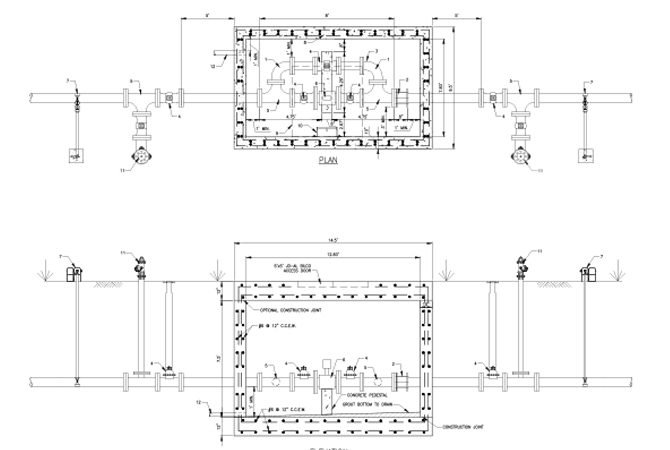Pleasant Run Road
Colleyville, Texas
Expertise
- Municipal
Services
- civil engineering
- landscape architecture
- land surveying
Size
- 3,100 LF

Baird, Hampton & Brown was hired by the City of Colleyville to provide civil engineering, land surveying, and landscape architecture services for improvements to a water line along Pleasant Run Road. Following the preliminary design phase, the project was expanded to include paving and drainage improvements, design for a hike and bike trail, and the replacement of a small portion of sewer.
The existing six-inch water line was replaced with 12-inch water line, for a total of approximately 3,100 linear feet along the road. Because the water line was pre-existing, services had to be maintained to resident properties throughout construction. After investigating different options, the line was constructed using a combination of open cut and horizontal directional drilling methods in order to minimize the impact of construction on the neighborhood and existing utilities. Near the northern limit of the project, the road crosses Big Bear Creek. Instead of boring under the creek, the water line was mounted to the bridge, requiring coordination with TxDOT due to an ongoing reconstruction project.
The bridge over Big Bear Creek crosses the city limit between Colleyville and Southlake. During design, we discovered this as an opportunity to propose an interconnection between the two cities’ water systems. This required coordination with both municipalities as well as TCEQ submittals. The end result is a large vault in the parkway containing a bi-directional interconnection meter assembly that connects the two systems as needed in an emergency or water shortage on one side.


The proposed hike and bike trail is located in the east parkway of Pleasant Run Road and is approximately 2,800 feet in length. Because the two-way trail runs in close proximity to the road, we engaged our in-house landscape architect to research delineator options to serve as both a physical and visual barrier between motorists and trail users. Rumble strips were ultimately used in this project, and our research into other products proved valuable to the city for use in another project.
Key People
-

Tom Kellogg, RLA

Tom Kellogg, RLA
Associate | Senior Landscape Architect
As a Landscape Architect, Tom Kellogg has experience working in a project management position for both multi-disciplinary firms and landscape architecture design firms. His project history includes a wide variety of types, including parks and recreation, commercial landscape design, streetscapes, multi-family developments, and multimodal recreation trails.
Living only a mile away from our Grapevine office, Tom discovered BHB while he was riding his bike and instantly wished he could work here. As it turned out, BHB was looking for a landscape architect at the time, and the rest is history.
Outside of work Tom enjoys bicycling, something he’s loved doing since he was a kid. Tom also enjoys camping, traveling, visiting museums, and playing video games with his teenage son, Colin.
Project Experience
Imperial Construction Office and Shop
Monterra Medical Campus
Park Hill Surgery Center
The Bowden: Event & Weddings
Education
University of Arkansas:
Bachelor’s Degree/1982/Landscape Architecture



